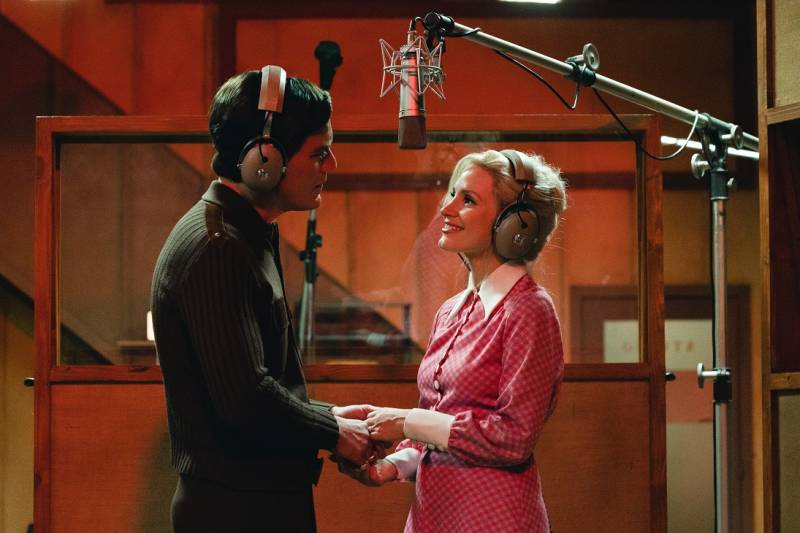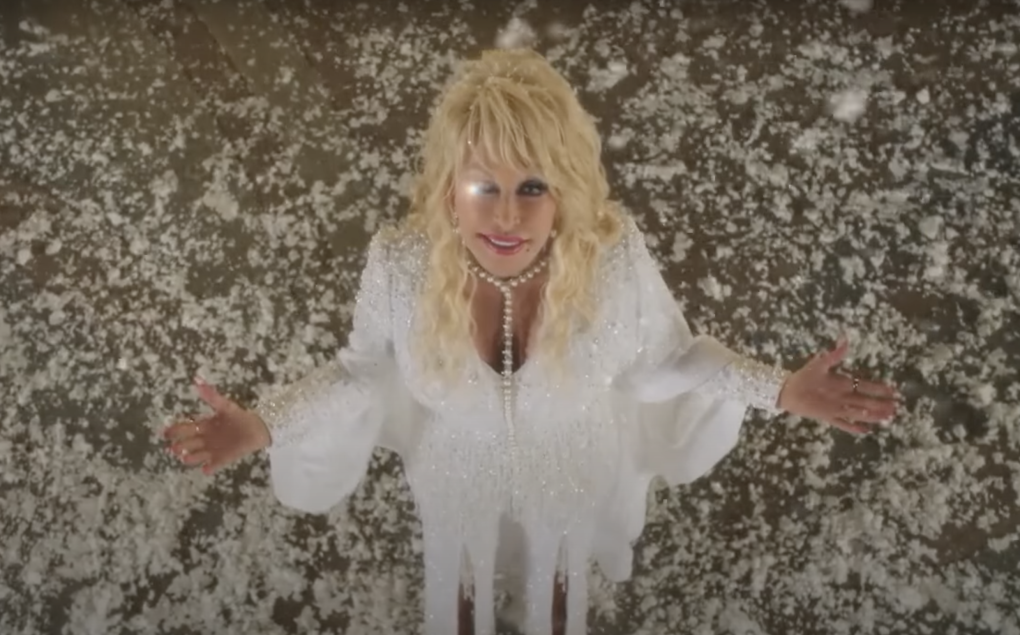George & Tammy is excellent at picking out and recreating all of the most important steps in Jones and Wynette’s personal stories and careers, even if the timeline isn’t always exactly right. The show is admirably unflinching when it comes to portraying Jones’ most undignified behavior, down to “Dee-Doodle,” his disturbing, cocaine-fueled, duck-voiced alter-ego. The series also understands the variety of abuses that Wynette endured in the three (of her five) marriages that are depicted here, as well as the very real physical ailments that resulted in her addiction issues.
That being said, there is some uncomfortable fabrication in George & Tammy (Wynette being present for Jones’ recording of “He Stopped Loving Her Today”? Poppycock!), as well as some glaring omissions. The famous feminist backlash against Wynette’s “Stand By Your Man” is reduced to a single three-second exchange, for example.
In Season 2 of country music history podcast Cocaine and Rhinestones, the true story of George Jones and Tammy Wynette is told in painstakingly researched detail. Where George & Tammy was based almost entirely on their daughter Georgette’s memoir, the makers of Cocaine and Rhinestones read every book and biography on the topic, fact-checked details and then parsed out the most likely conclusions. That’s probably the best approach when the two people at the center of the story are consistently unreliable narrators — whether for drug, image or ego-related reasons.
Though George & Tammy is an infinitely more moving depiction of Jones and Wynette’s lives than was offered in the podcast, anyone who has listened to Cocaine and Rhinestones will struggle with the way some of Wynette’s less flattering character traits are omitted from the show. The many times she was caught in major lies, Wynette’s pursuit of her friends’ boyfriends for sport, the unconvincingly applied makeup bruises after her now-infamous falsified kidnapping — all absent from George & Tammy. (And, in the interest of avoiding spoilers, let’s just say the culprit behind the mysterious graffiti on Wynette’s house looks very different in George & Tammy from how it was presented in the podcast.)
There can be no doubt that the real-life Wynette was a resilient, hard-working and determined woman who was an excellent mother to her four daughters. There’s no questioning her musical clout either. The problem with George & Tammy is that its depiction of her relies too heavily on the sanitized, victim-centric picture that Wynette painted of herself when she was alive. Because of that, some of the most complicated and fascinating aspects of Wynette’s character are absent here.





